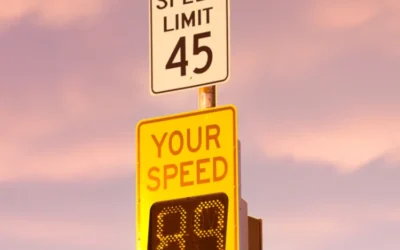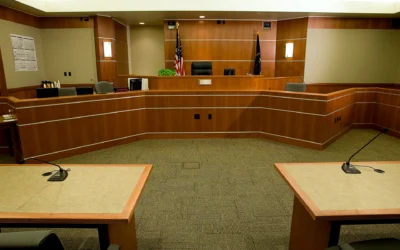Following Too Closely – How Long Does It Take To Stop?
A common civil traffic violation that we see is following too closely. Without getting into the merits of these tickets, or how police officers often follow civilians at dangerously close distances, I wanted to talk about how long does it actually take to stop at highway speeds.
There are a number of factors that impact stopping distance:
-
- road surface
- weather
- the type of car
- the type of tires on the car
Reaction time is another variable that is impacted a number of things such as:
-
- attention
- fatigue
- experience
- vision
- impairment
Assumptions
We’re going to make some assumptions for the purposes of this post, including:
-
- An average driver who has no impairments and who is paying attention.
- An average car with good quality all-season tires.
- A dry, smooth road.
For our average car, we’re using a 2018 Audi A4 sedan. Car and Driver road tested one of these. During testing, they were able to go from 70 mph to zero in 157 feet, or about 4.5 seconds. That’s a deceleration rate of about -15.6 mph per second.
Using some equations on deceleration from toppr.com, we can calculate some stopping distances and times for some other speeds:
Stopping Distances
50 mph is about 73 feet per second, 50-0 mph takes 80 feet and 3.2 seconds
65 mph is about 95 feet per second, 65-0 mph takes 129 feet and 4.2 seconds
90 mph is about 132 feet per second, 90-0 mph takes 260 feet and 5.8 seconds
105 mph is about 154 feet per second. 105-0 mph takes 353 feet and 6.7 seconds
Reaction Time
Now we also have to look at the reaction time of the driver. This is the time it takes from when the driver realizes he or she needs to hit the brakes, to when the driver actually begins applying the brakes. It does take time to mentally process “oh, I need to hit the brakes”, then to take your foot off the gas, move it left and then to press the brake pedal. It takes the average driver about 1.5 seconds to do this.
Stopping Distances With Reaction Times
50-0 mph takes 190 feet and 4.7 seconds
65-0 mph takes 272 feet and 5.7 seconds
90-0 mph takes 458 feet and 7.3 seconds
105-0 mph takes 584 feet and 8.2 seconds
Now sure, on a highway, usually the car in front of you also has to hit the brakes, so they are not stopping immediately. The driver in front of you also may not be coming to a complete stop, they might just be braking.
But, the reaction time accounts for more than half of the stopping distance. This is because while a driver is reacting, they aren’t actually slowing down. They are continuing at full speed during that reaction time. So when a car in front of you hits the brake, you continue to close in on them at full speed for about 1.5 seconds before you can begin stopping.
An Example of Stopping Distance
Let’s say for example that driver is following 3 car lengths behind another car on the highway at 90 mph. Let’s also say that both drivers have the average Audi A4 that is about 16 feet long. Three car lengths is about 48 feet.
The lead Audi comes up on a refrigerator in the middle of the highway and nails the brakes. The driver in the following Audi takes 1.5 seconds to see what’s going on and begin braking.
Referring back to the stopping distances above, in this example it takes the lead Audi 260 feet to stop once the braking begins. It takes the following Audi 458 feet to stop because we have to factor in the time it took for the following Audi to respond to the lead Audi’s braking. Obviously 458 feet is way longer than 260 feet. At a 3 car lengths following distance, the following Audi only had a 48 foot cushion. I didn’t do the math but somewhere in this braking exercise these two Audis are going to inevitably collide.
Recommended Following Distance
Depending on who you listen to, it is generally recommended to allow at least 3 to 5 seconds of following distance when driving. In the example above, if the following Audi had been following at 3 seconds, the driver would have had enough time to stop without colliding with the lead Audi. 3 seconds at 90 mph works out to a following distance of almost 400 feet, more than enough buffer to stop safely.
Latest Blog Posts
3 Things Arizona Drivers Need To Know About Speed Limits
You can be charged with a crime for exceeding the speed limit by more than 20 mph. Arizona has a criminal charge called Excessive Speed, a.k.a. criminal speeding. If you are driving more than 20 mph over the posted speed limit, you can be charged with excessive speed....
What Counts As Evidence In Court in Arizona?
What Counts As Evidence In Court?In Arizona, what counts as evidence and how that evidence can be presented in court is determined by the Arizona Rules of Evidence. Except for civil traffic cases, where the rules of evidence don’t apply. Please note, lawyers spend an...
Chris Rike is a founding partner of Traffic Law Guys, an Arizona law firm committed to protecting the rights of drivers facing criminal traffic charges.


